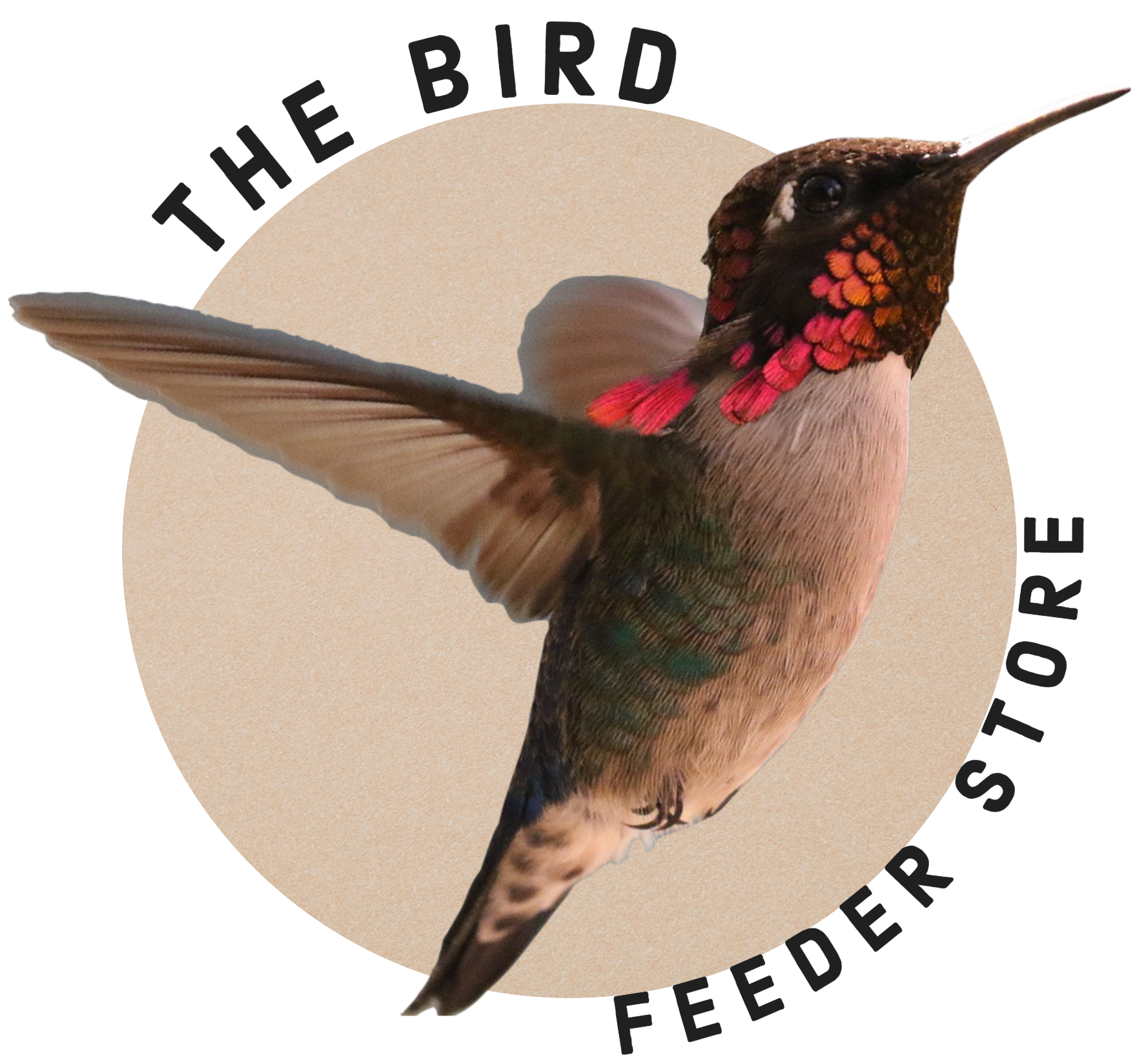Do Hummingbirds Return to the Same Place?
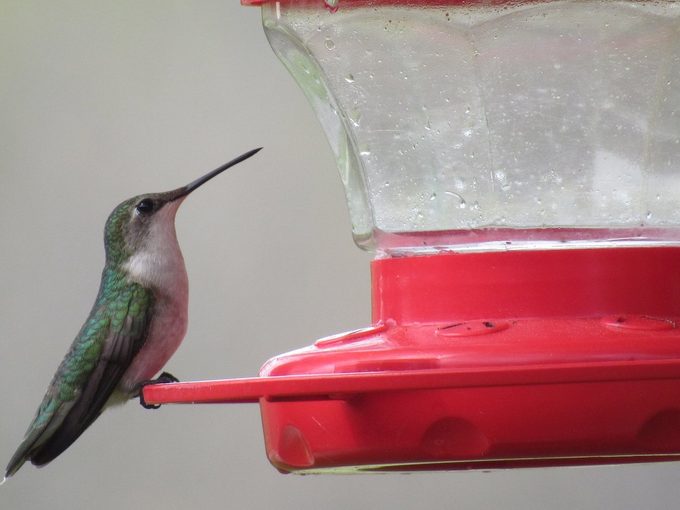
If you think the same hummingbirds come back to your feeders and flowers every year, you might be right! Banding research shows they are likely to return to the area where they hatched.
When should you put out hummingbird feeders in spring?
Hummingbirds Migrate Alone
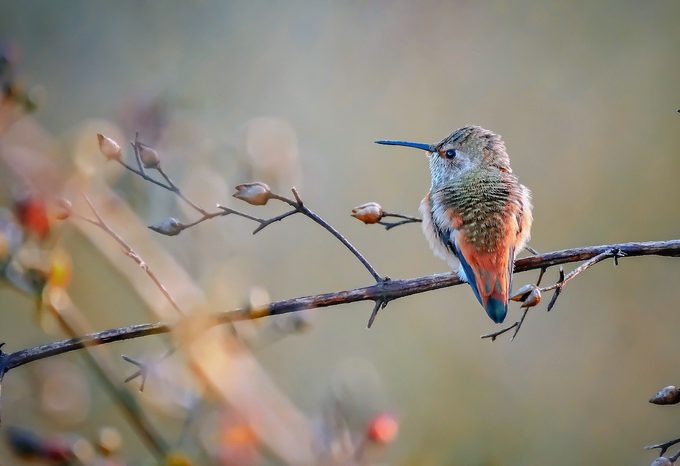
Hummingbirds are solitary migrants, so you won’t see them traveling in flocks. Wintering grounds vary by species. Most ruby-throats spend the cold months between southern Mexico and northern Panama. This is why you should keep feeders up for late migrating hummingbirds.
What Color Are Hummingbirds?
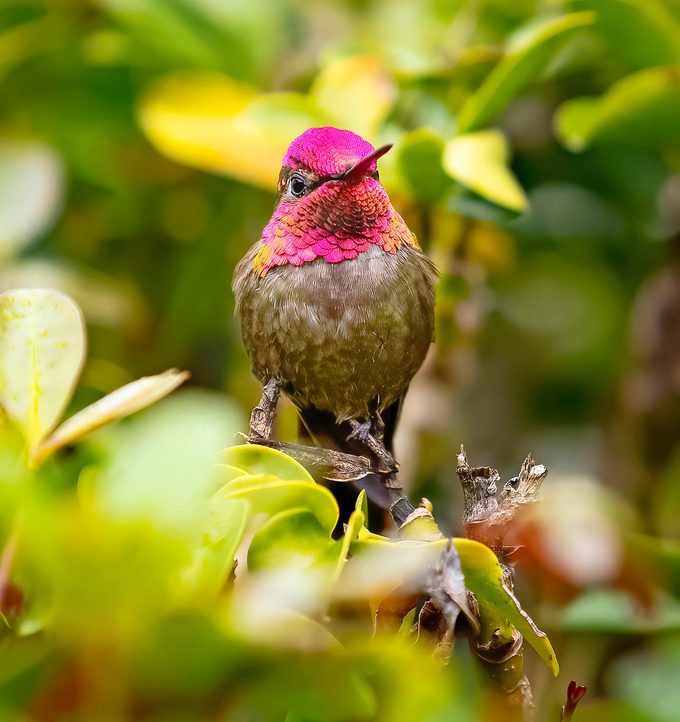
Hummers vary tremendously in the color and arrangement of their iridescent parts. Even among the handful of hummingbird species that are widespread in the United States, the array of colors is impressive. The male Allen’s and rufous hummers have blazing red-orange throats. The beautiful male Anna’s hummer has an incredible iridescent magenta throat, face and crown. And the closely related Costa’s hummingbird, whose neck feathers taper into long mustache-like points on each side, has a head wrapped in royal purple.
What Are the Colorful Patches on Their Necks?
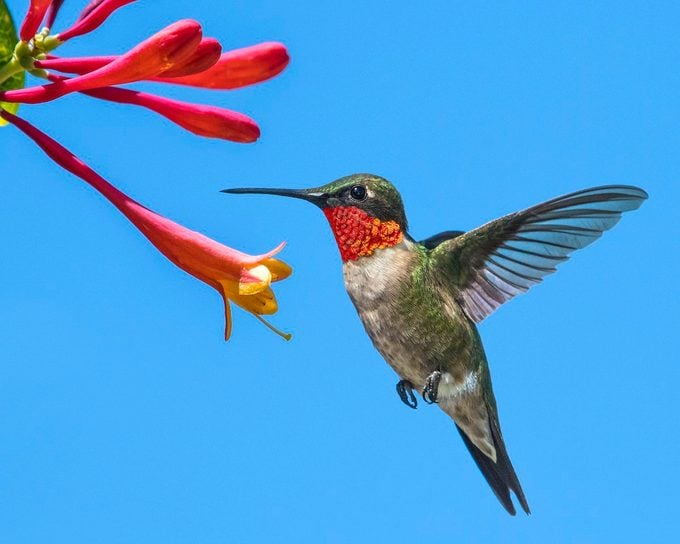
With just a turn of its head, a hummingbird explodes in iridescent radiance. Its gorget (the patch of colorful feathers covering its throat) instantly blazes in shades that span the color spectrum, depending on the species. These dazzling colors come from the feather structure rather than pigmentation. Each iridescent feather has tiny spikes that are densely packed with many layers of microscopic structures filled with air bubbles. These structures reflect light, says Bob Sundstrom, a science advisor for BirdNote, “creating color in the manner of sun glinting off an oily film on water.
Hummingbirds Are Aggressive

Despite their tiny size, hummingbirds can be very territorial. They spend a lot of time chasing other birds away from the feeders or flowers they’re protecting.
“Birds that drink nectar tend to be aggressive,” Chris says. Researchers’ best hypothesis is this: Most birds need to find their food—hidden seeds or grubs—but hummingbirds feed on flowers that are showy by nature. That means they can see all their food sources, but so does the competition. “They evolved to be really aggressive defending that food from other animals that might also eat it,” Chris says.
Learn more about hummingbird behavior.
How Do Hummingbirds Choose Flowers?

Another fascinating hummingbird fact—they have superb visual acuity. They see color even better than we do, with their vision extending into the ultraviolet spectrum. Their eyes are adapted to see warm shades better than cooler shades. This ability to easily pick out orange, yellow and red flowers amid a sea of cool green led to the long-held assumption that they prefer red over other colors. Scientists have since learned that the richness of the nectar matters more than the color of its source. The birds are quick learners, and it is nourishment they are after. With the right flowers and feeders, you can attract them to your yard, too.
Hummingbirds Take Quick Breaths

While resting, the average 4-inch hummingbird takes about 150 breaths per minute. Discover the truth about common hummingbird myths.
Hummingbirds Can Hover and Fly Backward
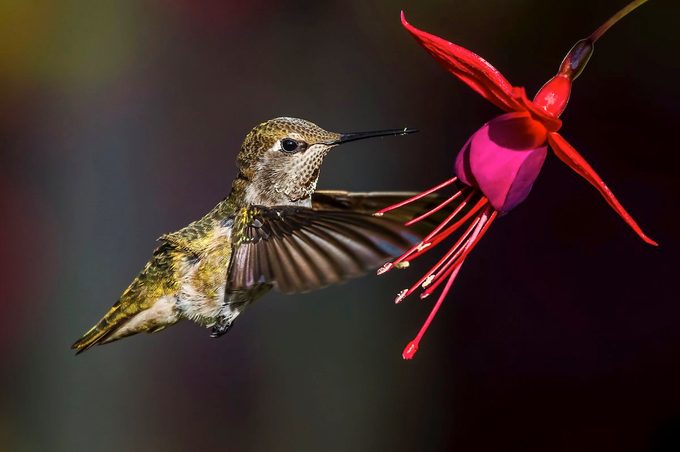
Stun your friends with these hummingbird facts. No other bird can match the hummingbird for agility on the wing. They can hover in midair at flowers and feeders, and they’re the only birds that can fly backward. Their wings move in a figure-eight pattern, which allows them to maneuver with ease. Other birds create the lift needed for flight with each downstroke of their wings. In other words, typical bird flight is achieved by flapping the wings up and down.
It’s not the speed of its wings that allows a hummingbird to hover—it’s the structure of its wing joints. Hummingbirds can rotate or twist the upper arm bones to invert their wings as they flap. This lifts them into the air on both the upstroke as well as the downstroke. The result? They are the most agile birds on the planet.
Meet the calliope hummingbird: the smallest bird in the U.S.
How Fast Do Hummingbirds Fly?

A hummingbird’s namesake hum is created by air moving around its wings. Known for erratic and agile movements, hummingbirds beat their wings more than 50 times per second, and even faster in extreme flight mode. They’re also among the fastest fliers for their size, reaching speeds of up to 37 mph, and up to 60 mph in courtship dives.
Psst—this is how long hummingbirds live.
Hummingbirds Love Bird Baths
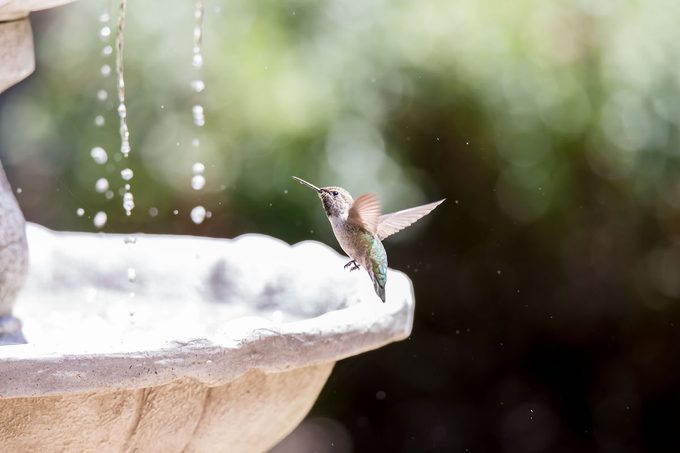
A birdbath with a small mister, bubbler, or sprayer attracts hummingbirds. It’s a rare sight, but they might fly through the mist of a lawn sprinklers, too! Hummingbirds meticulously preen their feathers. In that respect, they are like race car drivers who take immense care to keep all parts of their automobiles in perfect working order. Hummers love to take a shower—or even a bath—using water to help clean their plumage, and they are attracted to gardens with water features, intentional or not. Of course, hummers visit bird baths and other standing-water features as well.
Will hummingbirds use a birdhouse?
The First Hummingbird Feeders
Another key invention was the feeder that attracted the attention of that ruby-throated hummingbird. It was a blown-glass sugar water feeder devised by Laurence Webster, who made it to feed hummingbirds in his New England gardens. National Geographic readers were immediately transfixed by the concept of feeding hummingbirds and wanted feeders of their own. In 1950 Audubon Novelty Company released the first commercially available hummingbird feeder and called it “the Webster Hanging Feeder.”
Psst—we found the best hummingbird gifts for any occasion.
